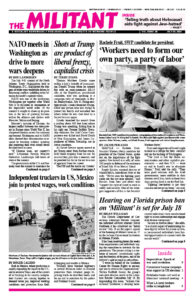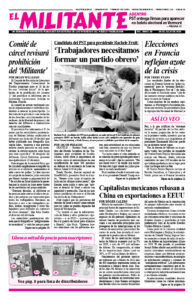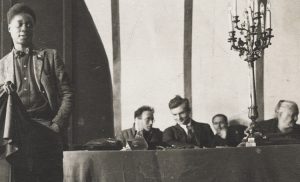Socialist Workers Party leaders were pioneers of U.S. and world communist movement in 1920s and of labor battles that built industrial unions in 1930s, including organizing drives that brought tens of thousands of truckers into the Teamsters union.
Left, Minneapolis Teamsters leader announces victory in 1934 drivers strike. Teamsters local orga-nized citywide Union Defense Guard to halt fascist recruitment and led union opposition to U.S. im-perialist aims in World War II. They “taught us what the U.S. working class is capable of as it awak-ens in struggle,” says Waters.
At top, longtime SWP leader James P. Cannon (table, second from left), was founder of U.S. com-munist movement in 1919 and a delegate to 1922 Congress of Communist International in Moscow. Also at presiding table are Karl Radek (Bolshevik party, Russia, left) and Clara Zetkin (Communist Par-ty, Germany, right). At podium is Claude McKay, one of U.S. delegates.
By Susan Berman
June 1, 2018


